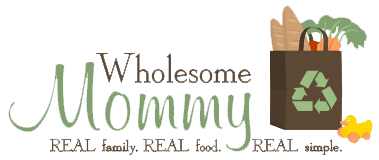As a new mom I’ve been thinking a lot about saving money so that I can stay home with my little one. As important as saving money is to me, I am also concerned with providing quality meals to my family. While we aren’t so strapped for cash yet that we are living on beans and rice, my budget does not allow for many convenience or specialty foods.
While convenience foods are just that, convenient, they don’t always provide the best nutrition. So, I’m not too worried about purchasing fewer convenience foods. However, I have been thinking more about organic foods. But, while organic may be better for my family’s bodies (fewer pesticides), they aren’t so great for my wallet!
While growing your own pesticide-free garden would be a great alternative, this isn’t an option for me at this time. Having a newborn at home and working a part-time job (oh yeah, and did I mention this blog takes a fraction of my time as well) pretty much takes up all my time. I hope to be able to do some gardening of my own when Judah gets a little older. But, growing your own “organic” foods can be a costly project if you don’t use your resources wisely. For instance, keeping seeds from the previous year’s harvest and growing you’re own seedlings is much better for your wallet than purchasing new plants each year.
That is why I’ve been doing a little research and this is what I have found:
If you are going to try to purchase organic produce there are certain foods that are considered the “dirty dozen” because they are they most laden with pesticides – either because they are treated more often or with more pesticides or they do not have a thick protective skin. If your budget allows for ANY organic produce you should try to buy these “dirty dozen” organic:
2. Apple
3. Bell pepper
4. Celery
5. Nectarine
6. Strawberries
7. Cherries
8. Kale
9. Lettuce
10. Grapes (imported)
11. Carrot
12. Pear
And here are the “clean fifteen” – if your budget doesn’t allow for total organic don’t worry about purchasing these organic.
2. Avocado
3. Sweet corn
4. Pineapple
5. Mango
6. Asparagus
7. Sweet peas
8. Kiwi
9. Cabbage
10. Eggplant
11. Papaya
12. Watermelon
13. Broccoli
14. Tomato
15. Sweet potato
The Environmental Working Group (EWG) research has shown that “consumers can reduce their pesticide exposure by 80 percent by avoiding the most contaminated fruits and vegetables and eating only the cleanest. If consumers get their USDA-recommended 5 daily servings of fruits and vegetables from the 15 most contaminated, they could consume an average of 10 pesticides a day. Those who eat the 15 least contaminated conventionally-grown fruits and vegetables ingest less than 2 pesticides daily.”
I am looking into finding the cheapest prices on organic produce and purchasing them when I can – especially those in the dirty dozen.
What do you think? Can frugal and organic life in the same household? I’d love to hear your thoughts.









